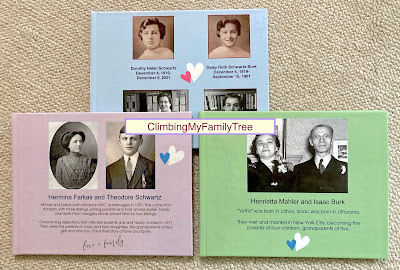So many times, I've wished my ancestors took a photo at a special event or wrote the names/relationships of people on the back of photos or saved invitations to weddings or baby showers. These ancestors lived many yesterdays ago. Alas, I can't go back in time to ask questions or view special events.
As family historians, we're always looking back in time...but we also need to look ahead and be good ancestors for the sake of future family history.
Take photos, print some too
In five or ten years, will we remember the names of all those people at the special anniversary dinner? Or who attended Uncle Joe's 90th birthday party? Where the family vacationed in the summer of 2024? Which family hosted that big New Year's Eve party in 2019?
That's why I ask relatives to please pull out their phones and snap a few photos at family events, then send to me. I compile and share key photos with everyone, sometimes within hours or days of the event and sometimes later.
Every month or so, I print a couple of photos (from today and yesterday) and pop a print into the mail to a relative as a surprise. The idea is to have a tangible memory of that get-together or holiday or first day of school. In the future, these will be remembered and appreciated. They will bring back strong emotions of earlier days!
Also our family's yearly wall calendar features photos of the previous year and some older photos to memorialize those who we loved and lost. And end-of-year photo book helps to capture the high and low points of what my hubby and I did in the previous 12 months. In the photo books, I give dates and name names, though the photos are not always fully captioned with surnames.
Remember LOCKSS
Lots of copies keep stuff safe. That's how LOCKSS works. If three relatives have a photo of Uncle Joe's party, there is a better chance that at least one photo will survive till 2050 or beyond--plus, if names are written on the back, future family historians will be especially grateful. My yearly photo books will help future generations see what was going on from 2008 forward.
Future family history depends on our ability to look ahead and plan ahead!






















